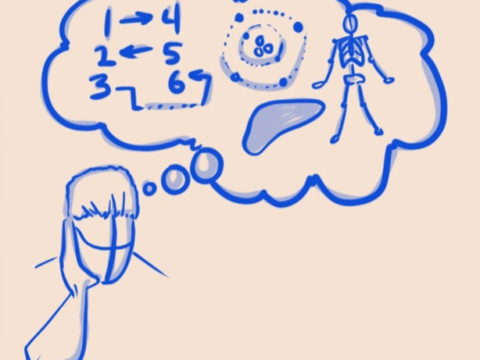Energy. It’s a wobbly concept for your mind to hold on to. You want to get the concept at a deep level & the best way to do that is by comparing it to your daily experience. Have you ever had a day where you woke up ready to take on the world? Or maybe a day where you would prefer to simply sleep in another 2, 6, 18 hours? If you take the high energy day and take whatever made that difference out and hold it in your hands, label that: energy. Non-conscious things like cells don’t feel it like you do, but they also rely on energy to do their work.
Simply, energy is the capacity to do stuff. Gasoline is energy for your car to drive. The battery in your phone is energy for your phone to turn on & work. The calories in that stash of skittles under your seat is energy. Those 3 are all examples of chemical energy & it is the main form of energy your body relies to work. Pretty incredible that your body can take in food and oxygen and keep it going for your whole life. Let’s explore it further…
First, we gotta visit that the whole universe is made of tiny little pieces. There are only 3 of them: protons, neutrons & electrons. all protons are exactly the same, all neutrons are exactly the same, all electrons are exactly the same. They are called subatomic particles and when they combine, they make atoms. Atoms look like this:

https://physics.aps.org/featured-article-pdf/10.1103/PhysRevLett.110.213001
Every atom that has only 1 proton is called hydrogen, every atom with 2 protons is called helium. Each time you add a proton you get a new element, all the way up to 118. Those 118 make up everything in the universe from planets to your fingertips. You’ve probably seen a table of elements like this before:
Protons and electrons are attracted to each other and they really want to be together in the same proportions. So Carbon (aptly named #6 for it’s 6 protons) really wants to have 6 electrons, when it doesn’t it’ll be looking everywhere for something to fill that desire even if it has to share that electron with another atom.
SIDENOTE: neutrons don’t have a charge so they don’t play the attracting & repelling game.
Protons and protons and electrons and electrons are repelled by each other. Magnets are a great way to get an intuition about this, you can feel the force drawing a magnet together (or repelling when you flip it around), think of this at the atomic level and you get a sense of the attracting and repelling that is going on between atoms and their parts.
SIDENOTE: magnets work because the atoms in them are lined up in a certain way but can also be created by moving electrons, more detailed than we need to get here, but worth a google.
With a magnet, the closer your bring them the stronger the magnetic force & the more you can feel it, right? Same thing is happening at the atomic level, if Carbon 6 is missing 2 electrons instead of 1, more force. If farther away from the electron it wants there is less force & if closer – more force. If atoms were like you, a high-energy-ready-to-conquer-the-world morning would be driven by missing a lot of electrons for the number of protons they had.
So all chemical energy is the attracting or repelling forces between protons and electrons. As atoms combine and connect like a giant set of folding and twisting magnets – those attracting & repelling forces are the things at work.



